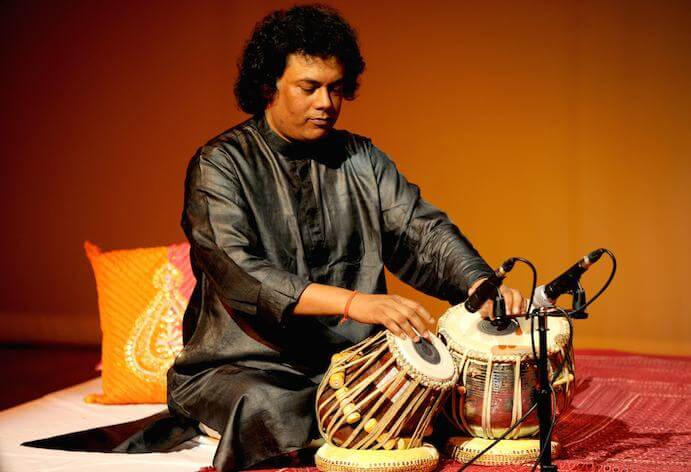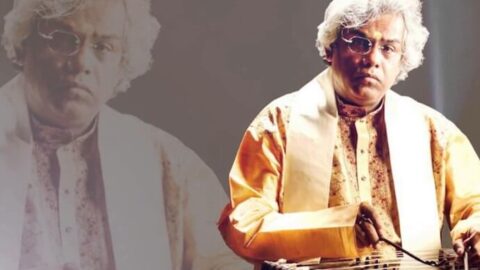The stage was set in the traditional Indian style and featured bright lights and cushions. The size of the Purcell Room created an intimate atmosphere; smoke trails curled in the stage lights and surrounded the audience. The musicians sat on the floor, gave a brief word to the audience, and started the performance. Pandit Tarun Bhattacharya and Kousic Sen are world-renowned musicians. They are known for their contemporary classical Indian music that encapsulates centuries of musical tradition. On June 26, 2015, Bhattacharya played the santoor; the santoor is an instrument with 100 strings that resembles a hammer dulcimer. He was accompanied by Kousic Sen on tabla throughout the concert.
Bhattacharya played the first note on the santoor and the audience fell silent in anticipation. A raga can take longer than a symphony to evolve into the climax, and this concert was no exception. 90 minutes flew by as the raga flowed along and the hypnotic tones undermined any sense of time. He played the first section of the raga unaccompanied, which is called the alap. This section featured virtuosic techniques and free rhythms in a cyclical form. Bhattachayra is the pioneer of the pitch bending technique which has revolutionized modern santoor playing. The audience gasped each time he bent a pitch, sometimes reaching an octave or more in one jump.

Kousic Sen joined on tabla, and the raga slowly evolved. The music was an ebb and flow between the two instruments that was like a conversation. The two musicians exchanged nods and glances to communicate where the music was headed, and it felt like watching two old friends jamming in their living room. They weren’t just playing for an audience; they were playing for the sake of the music. There were soft exclamations as Kousic Sen’s hands flew in a blur over the tabla. The drums seemed more like an extension of himself than an instrument. Kousic Sen and Bhattacharya played with an impressive synchronicity that was truly stunning.
The second half of the concert had two original compositions. Due to an unfortunate microphone setup, it was nearly impossible to hear the names of the pieces or the composers throughout the concert. With no physical program or digital projection, it was disappointing to listen to gorgeous music and not know the title or composer. Thanks to Bhattacharya’s extensive discography, I can safely assume that the two pieces in the second half were his original compositions. They both contained traditional aspects of classical Indian music, while moving away from the rigid prescriptions of a raga. Both pieces were much shorter than the 90 minute raga in the first half, jumping into a climax much earlier on. These pieces utilized scales and melodies that don’t fit the strict definition of a raga, while maintaining a great deal of percussive interest and melodic charm. Without the 60-minute build up, these pieces are easier to listen to on their own, but lack the hypnotic and ethereal quality of a traditional raga. This is not to say that one piece is better or more interesting than another; every piece on the concert was engaging and full to the brim with virtuosic talent.

Bhattacharya created a new world for classical Indian music and expanded it to include younger generations. His music has been performed around the world to rapturous applause and he has created new traditions in the genre. The only disappointment at this concert was the lack of tech support– on more than one occasion, Bhattachayra asked for lights so that he could address the audience, but there was no assistance. The microphones were not optimized for this concert. At times it was very difficult to understand Bhattachayra as a result, which was frustrating as there were no printed programs available. In addition, during the heavy percussive portions of the concert, the microphone was picking up some extra noise from the tabla. Perhaps next time, the staff for the Purcell Room will be more prepared for a classical Indian music concert.
This concert was sponsored by Milapfest, a year-round celebration of South Asian music and dance. Concerts take place in London, Liverpool, and Manchester.
























